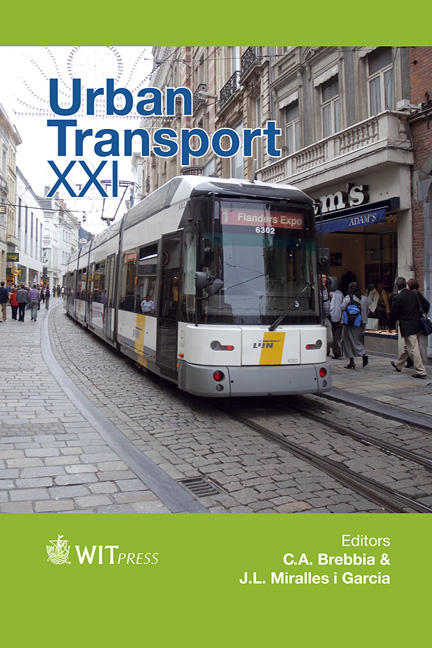Pavement Life Cycle Cost Analysis For City Logistics
Price
Free (open access)
Transaction
Volume
146
Pages
12
Page Range
337 - 348
Published
2015
Size
1,445 kb
Paper DOI
10.2495/UT150271
Copyright
WIT Press
Author(s)
F. G. Praticò, L. Amodeo, D. Lamari, C. Lanciano, V. Placido, M. Praticò, T. Scattareggia
Abstract
As is well known, city terminals in densely populated areas affect traffic, infrastructures, health and the environment.
In more detail, a new terminal has the potential for influencing urban transport strategies, environmental aspects, infrastructure development, city logistics, freight transport, port and city interaction, and life cycle management.
In light of the above facts, the objectives of this study were confined into the preliminary analysis of the life cycle cost (LCCA) associated to several hypotheses in terms of geometric design and pavement design of a new city terminal.
Hypotheses included: a) the choice of the location of the freight terminal (close to railway track, motorway and port of a town having a population of about two hundred thousand people); b) layout and main heavy vehicle paths from/to the terminal; c) equipment; d) main operations; e) dynamic and static loads of equipment; f) pavement design alternatives, construction and quality assurance. Under the above hypotheses, a life cycle cost analysis has been carried out, including rehabilitation alternatives, resurfacing alternatives, analysis period, salvage value, interest and inflation assumptions, present value derivation.
Based on the results obtained, rehabilitation options emerged as a key factor in the minimization of the overall life cycle cost in terms of present values.
Results can benefit both researchers and practitioners.
Keywords
life cycle cost analysis, urban transport, pavement, port, freight terminal, city logistics, urban distribution centre





